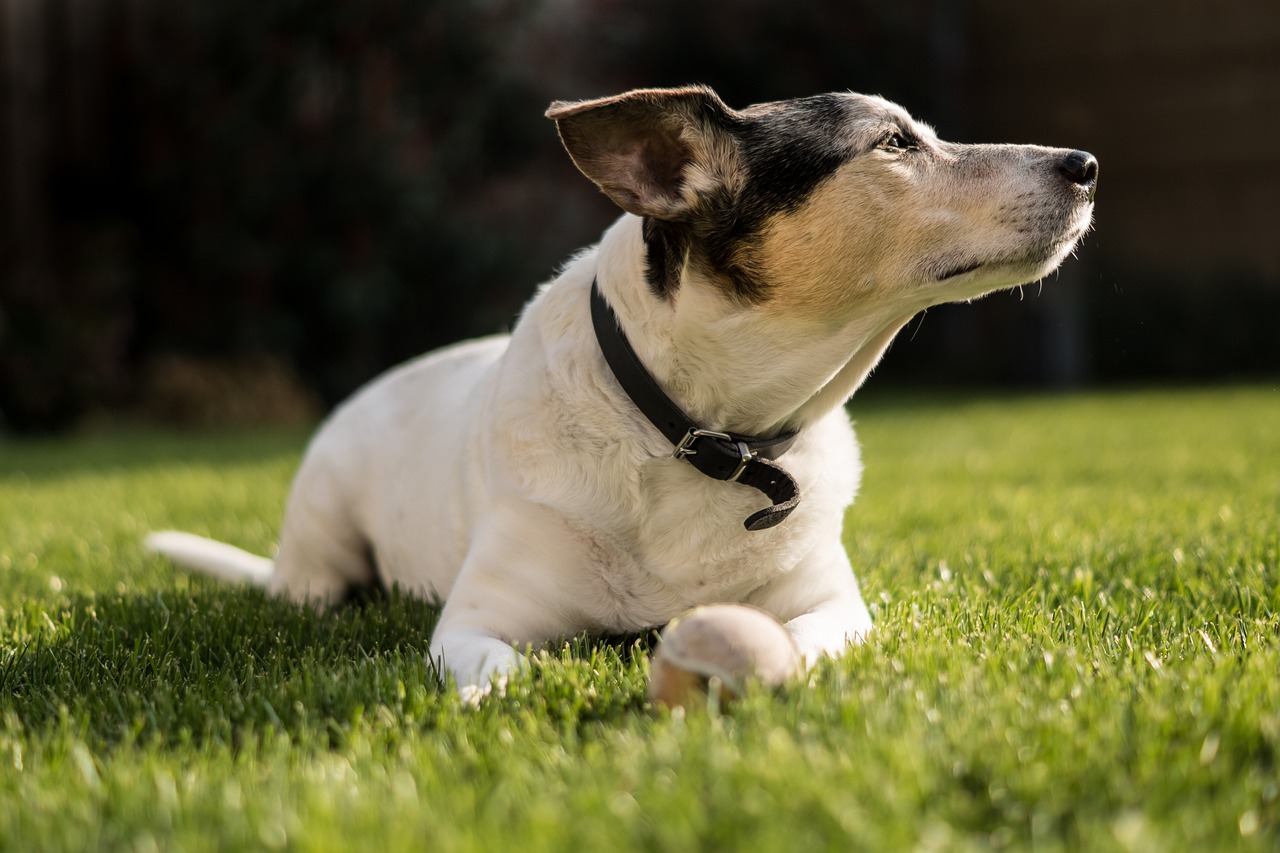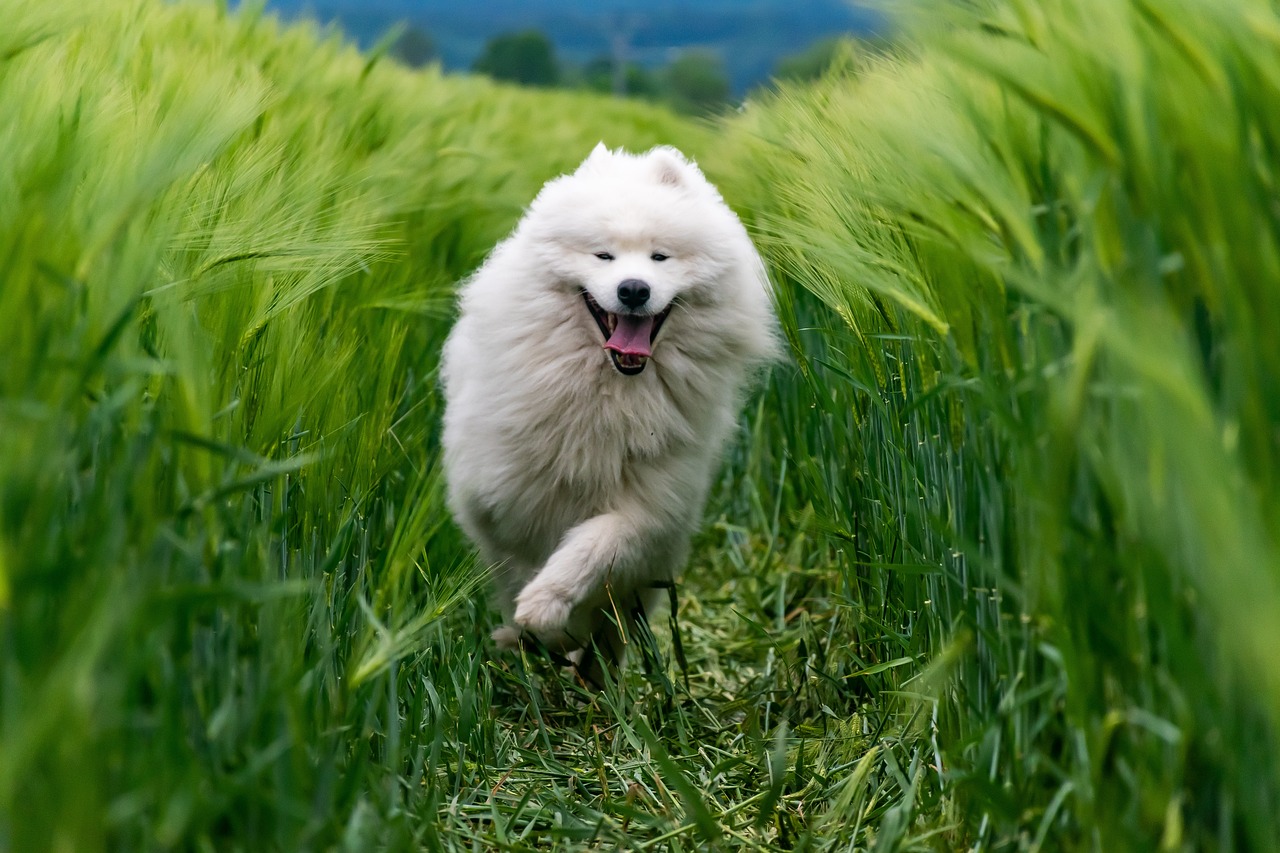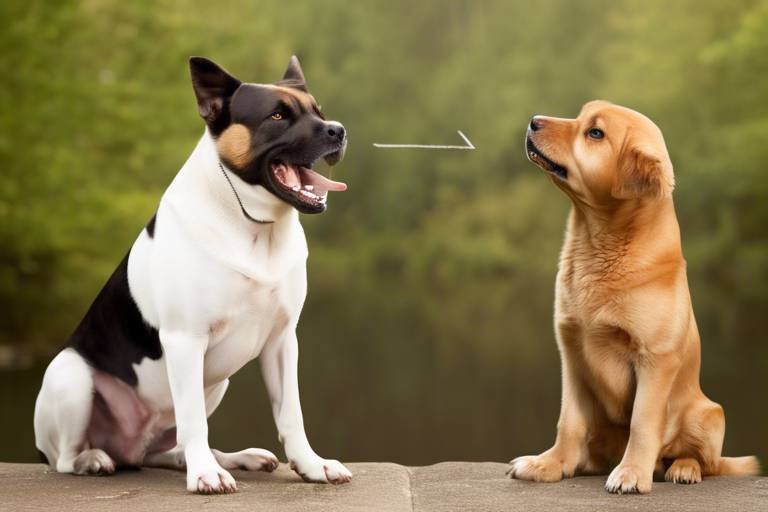The Role of Consistency in Dog Training Methods
When it comes to dog training, the phrase "practice makes perfect" couldn't be more accurate. However, it's not just about practice; it's about consistency. Consistency in dog training is the backbone of effective learning and behavior modification. Imagine trying to teach a child the alphabet but switching up the letters every day. Confusing, right? That’s exactly how dogs feel when their training lacks consistency. By establishing a clear and consistent training routine, dog owners can create an environment where their furry friends understand what is expected of them.
Why is consistency so crucial, you ask? Well, dogs thrive on routine and predictability. When commands, rewards, and responses are consistent, dogs are more likely to grasp what behaviors are desired. This clarity leads to a stronger bond between the owner and the pet, as trust is built through reliable communication. Just like a well-oiled machine, a consistent approach to training allows for smoother interactions and quicker learning. The result? A well-behaved canine companion that knows how to respond to commands without hesitation.
In the world of dog training, there are various methods to choose from—each with its unique approach. However, the one thing they all have in common is the need for consistency. Whether you’re opting for positive reinforcement, clicker training, or leash training, maintaining a steady hand and a clear message is vital. For instance, if you’re using positive reinforcement, it’s essential to reward your dog every time they exhibit the desired behavior. Skipping rewards or offering them inconsistently can lead to confusion and frustration for both the dog and the owner.
In summary, consistency in dog training is not just a best practice; it’s a fundamental principle that enhances understanding and strengthens the relationship between dogs and their owners. Without it, you're not just risking your dog's training progress; you're also jeopardizing the trust and bond you’ve worked hard to build. So, as you embark on your dog training journey, remember: consistency is key!
Understanding why consistency is crucial in dog training helps owners establish clear communication and expectations, leading to more effective learning and better behavior in their pets.
Various dog training methods exist, including positive reinforcement, clicker training, and leash training. Each method has its own approach, but consistency is vital for success across all techniques.
Positive reinforcement encourages desired behaviors through rewards. This subheading discusses how maintaining consistent rewards can enhance a dog's learning process and strengthen the bond between owner and pet.
Exploring different types of rewards, such as treats, praise, and playtime, shows how consistency in reward selection can impact a dog's motivation and response to training.
The effectiveness of positive reinforcement relies on timely and consistent delivery. This section emphasizes the importance of immediate rewards to reinforce desired behaviors effectively.
Clicker training is a popular method that utilizes a sound to mark desired behaviors. Consistency in using the clicker helps dogs associate the sound with positive outcomes, enhancing learning.
Despite its importance, maintaining consistency can be challenging for dog owners. This section discusses common obstacles and strategies to overcome them for successful training outcomes.
Owner inconsistency can confuse dogs and hinder their learning. This subheading addresses how varying commands, rewards, or training frequency can negatively impact a dog's behavior.
Environmental distractions can disrupt training consistency. Here, we explore how to create a conducive training environment and manage distractions to maintain focus during sessions.
- How long should training sessions be? Training sessions should typically last between 5 to 15 minutes, depending on your dog's age and attention span.
- What if my dog doesn't respond to commands? Ensure that you are consistent in your commands and rewards, and consider consulting a professional trainer if issues persist.
- Can I train my dog at home? Absolutely! Many dogs respond well to training at home, especially in a familiar environment.

The Importance of Consistency
When it comes to dog training, consistency is not just a nice-to-have; it's a fundamental pillar that supports the entire learning process. Imagine trying to learn a new language where your teacher changes the rules every day. Confusing, right? That’s exactly how your dog feels when the commands, rewards, and expectations are inconsistent. Establishing a consistent training routine helps in building a clear line of communication between you and your furry friend. It sets the stage for effective learning, allowing your dog to grasp what is expected of them.
Consistency in dog training is crucial for several reasons. First and foremost, it helps create a sense of security for your dog. Just like humans, dogs thrive on predictability. When they know what to expect, they are more likely to respond positively. For example, if you always use the same command for “sit” and reward your dog immediately when they comply, they will quickly learn that sitting leads to positive outcomes. This clarity reduces anxiety and fosters a trusting relationship between you and your pet.
Moreover, consistency aids in habit formation. Dogs, like people, are creatures of habit. They learn through repetition, and when you consistently reinforce the same behaviors, those actions become ingrained. Think of it this way: if you were to practice a sport, doing the same drills over and over again would help you master the skills necessary to excel. Similarly, when you consistently train your dog using the same methods and commands, your canine companion will develop good habits that will last a lifetime.
However, it’s important to note that consistency doesn’t mean rigidity. While you should stick to the same commands and rewards, it’s also essential to adapt your training methods to suit your dog’s individual personality and learning style. For instance, some dogs may respond better to verbal praise, while others may be more motivated by treats. Adjusting your approach while maintaining overall consistency will lead to even better results.
In conclusion, the importance of consistency in dog training cannot be overstated. It lays the groundwork for effective communication, enhances learning, and fosters a positive relationship between you and your dog. By being consistent in your training methods, you are not just teaching your dog commands; you are also building a foundation of trust and understanding that will last for years to come.

Common Training Methods
When it comes to dog training, there are several methods that owners can choose from, each with its unique approach and philosophy. The variety can be overwhelming, but one thing remains constant: the need for consistency. Whether you're opting for positive reinforcement, clicker training, or leash training, maintaining a steady approach is essential for achieving the best results with your furry friend.
One of the most popular methods is positive reinforcement. This technique is all about rewarding your dog for exhibiting desired behaviors. Think of it as a way of saying, "Great job!" every time your pup does something right. But here’s the kicker: if you reward inconsistently, your dog may become confused about what behaviors are truly commendable. For instance, if you give a treat for sitting one day but ignore the same behavior the next, your dog will likely be unsure of what you expect. Therefore, keeping rewards consistent is crucial.
Another widely used method is clicker training. This technique employs a small handheld device that makes a distinct clicking sound to mark desired behaviors. The beauty of clicker training lies in its precision; the click serves as a clear signal that your dog has done something right. However, just like with positive reinforcement, the key to success here is consistency. If you click at random times or fail to follow the click with a reward, your dog may not associate the click with the desired behavior, leading to confusion and frustration.
Additionally, there's leash training, which focuses on teaching your dog how to walk calmly on a leash without pulling. This method is particularly important for ensuring safe and enjoyable walks. Consistency in commands and techniques is vital here as well. If one day you allow your dog to pull and the next you correct it, your dog won't understand the rules of the game. Establishing a consistent approach to leash training can make all the difference in creating a pleasant walking experience for both you and your canine companion.
In summary, regardless of the method you choose, the underlying theme remains: consistency is key. By maintaining a uniform approach in your training methods, you set a clear path for your dog to follow, making it easier for them to learn and adapt. Remember, dogs thrive on routine and clarity, so the more consistent you are, the better your training outcomes will be!
Positive Reinforcement
When it comes to dog training, stands out as one of the most effective methods. This approach is all about encouraging your furry friend to repeat desirable behaviors by rewarding them. Imagine this: every time your dog sits on command, you give them a tasty treat or a hearty pat on the back. This not only makes them more likely to sit again in the future but also strengthens the bond between you and your pup. The beauty of positive reinforcement is that it creates a win-win situation; your dog learns what you expect from them, and they also get rewarded for their efforts. It’s like a game where both of you are on the same team!
However, to truly harness the power of positive reinforcement, consistency is key. If you reward your dog sporadically or only sometimes for the same behavior, it can lead to confusion. For example, if you only give a treat when your dog sits but sometimes just praise them without a treat, they might start to wonder, “Wait, do I get a treat every time I sit, or just sometimes?” This inconsistency can lead to mixed signals and ultimately hinder their learning process.
To maximize the effectiveness of positive reinforcement, consider the different types of rewards you can use. Here are some popular options:
- Treats: These are often the most effective rewards, especially for food-motivated dogs. Just make sure to choose healthy options!
- Praise: Verbal cues like “Good boy!” or “Well done!” can be incredibly motivating for dogs, especially when delivered with enthusiasm.
- Playtime: For some dogs, a game of fetch or tug-of-war can be the ultimate reward, making them eager to perform the desired behavior.
While choosing the right type of reward is essential, the timing of your rewards is equally important. Imagine your dog just sat on command. If you wait too long to give them a treat, they might not connect the action with the reward. Instead, aim to reward them immediately after they perform the desired behavior. This immediate feedback helps them understand exactly what they did right. Think of it like a scoreboard in a game; the quicker you update the score, the clearer the game becomes!
In summary, positive reinforcement is a powerful tool in dog training, but it requires consistency in both rewards and timing. By being clear and consistent in your training methods, you’ll not only help your dog learn more effectively but also create a joyful training environment that strengthens your relationship.
Types of Rewards
When it comes to training your furry friend, the you use can make a world of difference. Dogs, much like humans, respond positively to incentives that resonate with them. The key to effective dog training lies in understanding what motivates your pet the most. By offering the right rewards consistently, you can create a training environment that not only fosters learning but also strengthens the bond between you and your canine companion.
There are several types of rewards that you can incorporate into your training sessions. Each dog is unique, so it’s essential to experiment and discover what works best for your pup. Here are some common types of rewards:
- Treats: Food rewards are perhaps the most popular and effective form of positive reinforcement. Dogs love treats, and using them during training can significantly enhance their motivation. Just be mindful of the quantity, as too many treats can lead to weight gain.
- Praise: Verbal praise, such as “Good boy!” or “Well done!” can be incredibly rewarding for your dog. The tone of your voice matters; enthusiastic and happy tones can make your dog feel appreciated and loved.
- Playtime: For many dogs, play is the ultimate reward. Incorporating a game of fetch or tug-of-war after a successful training session can reinforce positive behaviors and make training more enjoyable.
- Affection: Sometimes, all your dog needs is a good belly rub or a scratch behind the ears. Physical affection can be a powerful motivator, especially for dogs that thrive on closeness and connection with their owners.
However, it’s not just about the type of reward; consistency in how and when you deliver these rewards is equally important. For instance, if you decide to use treats, ensure that you’re offering them every time your dog performs the desired behavior at the beginning of the training process. Over time, you can gradually phase out the treats while continuing to offer praise or affection, which helps maintain your dog’s motivation without relying solely on food.
Additionally, the timing of your rewards plays a crucial role in effective training. You want to reward your dog immediately after they exhibit the desired behavior. This immediate reinforcement helps your dog associate the action with the reward, making it more likely they will repeat the behavior in the future. Think of it this way: if you were to receive a bonus at work, wouldn’t you want it right after a job well done? Your dog feels the same way!
In summary, understanding the types of rewards that resonate with your dog is essential for successful training. By providing a mix of treats, praise, playtime, and affection, you can create an engaging and motivating training atmosphere. Remember, the goal is to build a strong connection with your pet while guiding them towards good behavior. Consistency in both the type and timing of rewards will lead to a well-trained and happy dog.
Q: What if my dog is not motivated by treats?
A: Every dog is unique! If your dog isn't motivated by treats, try using their favorite toy or engage in a fun game as a reward. Observing what excites your dog can help you tailor your training approach.
Q: How can I ensure my dog understands the reward system?
A: Consistency is key. Always reward immediately after the desired behavior, and use the same commands and signals to avoid confusion. Over time, your dog will learn to associate the behavior with the reward.
Q: Can I use multiple types of rewards in one training session?
A: Absolutely! Mixing different types of rewards can keep your dog engaged and excited during training. Just ensure that you maintain consistency in your approach to avoid overwhelming them.
Timing and Delivery
When it comes to dog training, the timing and delivery of rewards can make all the difference in the world. Imagine trying to teach a child to ride a bike; if you only offer praise after they’ve fallen, they might not understand what they did right. Similarly, dogs learn best when rewards are given immediately after they exhibit the desired behavior. This is where the magic of timing comes into play. The quicker you can deliver a reward after a command is followed or a trick is performed, the more likely your dog will associate that action with a positive outcome.
For instance, if your dog sits on command, rewarding them instantly with a treat or praise reinforces the behavior. If you wait too long, say a few seconds or even minutes, your dog may become confused about what they are being rewarded for. They might think that the reward is for simply being near you or for something entirely different. This is why establishing a consistent routine where rewards are delivered promptly is crucial. It not only helps with learning but also strengthens the bond between you and your furry friend.
Moreover, the delivery of rewards should be enthusiastic and engaging. Dogs are incredibly perceptive to our tone of voice and body language. When you reward your dog, use a cheerful tone and a happy demeanor. This creates a positive association with the behavior. For example, instead of just handing over a treat in a monotonous voice, try saying, “Good boy!” or “Yes!” with excitement while patting them on the head. This emotional reinforcement makes the training experience enjoyable for both you and your dog.
To further illustrate the importance of timing and delivery, consider the following table that outlines the key aspects:
| Aspect | Importance |
|---|---|
| Immediate Reward | Helps the dog associate the behavior with the reward |
| Consistent Delivery | Reinforces learning and builds trust |
| Enthusiastic Praise | Encourages the dog and makes training fun |
In summary, mastering the art of timing and delivery in dog training is essential for fostering a well-behaved canine companion. By ensuring that rewards are given promptly and with enthusiasm, you not only enhance your dog’s learning experience but also create a joyful atmosphere that encourages them to thrive. So next time you train your dog, remember that every second counts, and your delivery can turn a simple command into a delightful bonding moment.
- How important is timing in dog training? Timing is crucial as it helps your dog associate the desired behavior with the reward, leading to better learning outcomes.
- What type of rewards should I use? Use a variety of rewards such as treats, praise, and playtime to keep your dog motivated and engaged.
- Can I use clicker training with positive reinforcement? Absolutely! Clicker training is a fantastic method that pairs well with positive reinforcement techniques.
- How can I improve my delivery of rewards? Practice using an enthusiastic tone and body language when delivering rewards to create a positive training environment.
Clicker Training
Clicker training is a fascinating and effective method that many dog owners have embraced to teach their furry friends new behaviors. The core principle behind this technique is simple yet powerful: it utilizes a small handheld device, known as a clicker, to produce a distinct sound that marks the exact moment a dog performs the desired behavior. This immediate feedback helps the dog understand what action is being rewarded, making it easier for them to learn. But here's the kicker—consistency in using the clicker is absolutely vital for success. If you're inconsistent with your clicks, your dog may become confused and lose interest in training.
Imagine trying to learn a new skill without clear instructions or feedback. It would be frustrating, right? The same goes for dogs. When you consistently use the clicker and pair it with positive reinforcement, like treats or praise, your dog quickly learns to associate the sound with a reward. This creates a clear communication channel between you and your pet, allowing for a more effective training experience. It's like having a secret language that only you and your dog understand!
To get the most out of clicker training, consider the following key points:
- Timing: The click must happen immediately after the desired behavior. This precision helps the dog make the connection between the action and the reward.
- Consistency: Use the clicker every time your dog performs the desired behavior. This builds a strong association between the click and the reward.
- Volume Control: Make sure the clicker is audible but not startling. You want your dog to respond positively to the sound.
When you start clicker training, it’s essential to choose the right moments to click. For instance, if you're teaching your dog to sit, the moment their bottom touches the ground is when you should click. This immediate reinforcement helps them understand that sitting is what earned them the reward. Over time, you can phase out the treats and rely more on the clicker and verbal praise, but only after your dog has mastered the behavior.
Another aspect to consider is the environment in which you train. Start in a quiet space with minimal distractions so your dog can focus entirely on you and the training. As your dog becomes more comfortable with the clicker training method, you can gradually introduce more distractions to help them learn to focus in various situations. This gradual increase in difficulty will help solidify their training and ensure they can perform the desired behaviors no matter the environment.
In conclusion, clicker training is an excellent way to communicate with your dog and teach them new skills. By maintaining consistency in your usage of the clicker, you set your dog up for success, fostering a strong bond and enhancing their learning experience. So grab a clicker, some tasty treats, and get ready to embark on an exciting training journey with your canine companion!

Challenges in Maintaining Consistency
Maintaining consistency in dog training can feel like trying to juggle flaming torches while riding a unicycle—challenging, to say the least! Many dog owners find themselves facing a myriad of obstacles that can derail their training efforts. One of the primary hurdles is owner inconsistency. Imagine trying to learn a new language, only to find that your teacher uses different words for the same thing every class. Confusing, right? That's how your dog feels when you switch up commands, rewards, or even the frequency of training sessions. This inconsistency can lead to frustration for both the owner and the dog, ultimately hindering the learning process.
Another significant challenge is environmental factors. Dogs are naturally curious creatures, and their attention can easily be diverted by the world around them. Whether it's the sound of a passing car, the sight of another dog, or even a squirrel darting up a tree, these distractions can disrupt training sessions and make it difficult to maintain focus. To combat this, it's essential to create a conducive training environment that minimizes these distractions. For instance, training in a quiet room or a secluded outdoor area can help your dog concentrate better and respond more positively to commands.
Moreover, the timing of training sessions plays a crucial role in maintaining consistency. If training sessions are sporadic and lack a routine, your dog may not understand that learning is a priority. Establishing a regular schedule can help reinforce the idea that training is a part of daily life. This regularity not only benefits your dog’s learning but also strengthens the bond between you two. Remember, dogs thrive on routine, just like we do!
Lastly, it’s important to acknowledge the impact of external influences on training consistency. Family members, friends, or even pet sitters may have different approaches to training your dog. If they use different commands or rewards, it can create confusion for your furry friend. To overcome this, it’s crucial to communicate openly with anyone involved in your dog’s training. Establish a unified approach to ensure that everyone is on the same page. This way, your dog can enjoy a consistent training experience, no matter who is in charge.
In summary, while maintaining consistency in dog training can be challenging, being aware of these obstacles allows you to develop strategies to overcome them. By addressing owner inconsistency, managing environmental distractions, establishing a regular training schedule, and ensuring a unified approach among all caregivers, you can pave the way for a more effective training experience and a well-behaved canine companion.
- Why is consistency important in dog training? Consistency helps establish clear communication and expectations, leading to more effective learning and better behavior in dogs.
- What are some common training methods? Common methods include positive reinforcement, clicker training, and leash training, all of which require consistency for success.
- How can I maintain consistency in my training sessions? Establish a regular schedule, use the same commands and rewards, and ensure everyone involved in the training is on the same page.
- What should I do if my dog gets distracted during training? Create a quiet training environment, limit distractions, and gradually introduce more challenging settings as your dog's focus improves.
Owner Inconsistency
Owner inconsistency is a significant hurdle in dog training that can lead to confusion and frustration for both the pet and the owner. Imagine trying to learn a new game, but the rules keep changing every time you play. That’s how your dog feels when you’re inconsistent in your commands and training methods. When owners use different commands for the same behavior, it creates a mixed message. For example, if you sometimes say "sit" and other times say "down" to mean the same thing, your dog is left scratching its head, unsure of what you really want.
Consistency is key to effective communication with your canine companion. Dogs thrive on routine and clear expectations. When you establish a consistent set of commands and rewards, your dog will quickly learn what behaviors are desired. This not only speeds up the training process but also strengthens the bond between you and your furry friend. It's essential to remember that dogs learn through repetition and reinforcement, so any inconsistency can stall their progress.
Moreover, inconsistency can manifest in various ways, such as:
- Changing Commands: Using different words for the same action can confuse your dog.
- Inconsistent Rewards: If you reward your dog for sitting one day but ignore it the next, your dog may not understand the behavior is expected consistently.
- Variable Training Frequency: Skipping training sessions or varying their frequency can disrupt your dog's learning curve.
To combat owner inconsistency, it’s crucial to create a training plan and stick to it. Here are some tips to help maintain consistency:
- Use the Same Commands: Choose specific words for commands and stick to them. For example, always use "stay" instead of sometimes saying "wait."
- Establish a Routine: Incorporate training into your daily routine so that your dog knows when to expect training sessions.
- Involve Family Members: Ensure everyone in your household is on the same page regarding commands and training techniques to avoid confusion.
By addressing owner inconsistency, you pave the way for a smoother training experience. Remember, your dog looks to you for guidance, and providing clear, consistent communication is the best way to help them succeed. The more consistent you are, the more confident your dog will feel, leading to a well-behaved and happy companion.
- What should I do if I realize I’ve been inconsistent in my training?
Start by acknowledging the inconsistency and commit to a consistent approach moving forward. Revisit the commands you’ve been using and ensure you stick to the same ones. - Can I train my dog if I have family members who are not on board?
It’s best to have everyone involved in the training process. Hold a family meeting to discuss training techniques and ensure everyone is using the same commands and rewards. - How long does it take for a dog to learn commands consistently?
It varies by dog, but with consistent training, most dogs can learn basic commands within a few weeks. Regular practice and reinforcement are key!
Environmental Factors
When it comes to dog training, the environment plays a crucial role that many owners might overlook. Imagine trying to focus on a task in a noisy café—it's almost impossible, right? Now, think about your dog attempting to learn new commands or behaviors in a bustling park filled with distractions. Just like humans, dogs need a calm and controlled environment to grasp new concepts effectively. So, how can you create an ideal training atmosphere?
First, consider the location where you train. A quiet room or a spacious backyard can be perfect for training sessions. If you're outdoors, try to choose times when there are fewer people and other pets around. This way, your dog can concentrate on you without the allure of squirrels, other dogs, or random noises pulling their attention away. Additionally, it's essential to keep your training sessions consistent in the same spot. Dogs thrive on routine, and a familiar environment can help reinforce learning.
Next, think about the distractions in your training environment. These can range from loud sounds, like traffic or construction, to visual distractions, such as other animals or people moving about. To help your dog maintain focus, you might want to start training in a less stimulating environment and gradually introduce distractions as they become more comfortable with the commands. This gradual exposure can help build their confidence and ability to focus amidst chaos.
Another factor to consider is the time of day. Dogs, like humans, have different energy levels throughout the day. Some may be more alert and eager to learn in the morning, while others might be more receptive in the evening. Pay attention to your dog's natural rhythms and schedule training sessions when they are most energetic and engaged. This can significantly impact their ability to absorb new information.
Lastly, don’t forget that your own mood and energy can influence your dog's training. Dogs are incredibly perceptive and can pick up on their owner's emotions. If you're feeling stressed or distracted, your dog might sense that and become less focused. To foster a productive training environment, approach each session with a positive attitude. A cheerful demeanor can do wonders in keeping your dog motivated and eager to learn.
In summary, the environment in which you train your dog is just as important as the methods you use. By ensuring a calm, distraction-free space, choosing optimal times for training, and maintaining a positive attitude, you can significantly enhance your dog's learning experience. Remember, consistency in both your training methods and environment will lead to a well-behaved and happy canine companion!
- What should I do if my dog gets distracted during training?
Try to remove distractions by moving to a quieter location or using a favorite toy to regain their attention. - How long should training sessions last?
Keep sessions short and engaging, typically around 5-10 minutes, to maintain your dog's interest. - Can I train my dog at home?
Absolutely! Home can be a great training environment if you minimize distractions and create a structured routine. - What if my dog doesn't respond to commands in a busy environment?
Start training in a quieter setting and gradually introduce distractions as your dog becomes more confident with the commands.
Frequently Asked Questions
- Why is consistency important in dog training?
Consistency is crucial because it helps dogs understand what is expected of them. When commands, rewards, and training methods are consistent, dogs are more likely to learn and retain behaviors. Think of it like learning a new language; if the rules keep changing, it becomes confusing!
- What are some common dog training methods?
There are several effective dog training methods, including positive reinforcement, clicker training, and leash training. Each method has its unique approach, but they all rely on consistency to be effective. It’s like having different tools in a toolbox; the right tool used consistently can get the job done!
- How does positive reinforcement work?
Positive reinforcement involves rewarding your dog for desired behaviors, which encourages them to repeat those behaviors. Rewards can be treats, praise, or playtime. The key is to deliver these rewards consistently so your dog learns to associate good behavior with positive outcomes.
- What types of rewards can I use in training?
You can use various types of rewards in dog training, such as tasty treats, verbal praise, or fun play sessions. The important thing is to be consistent with the type of reward you choose, as this helps your dog stay motivated and engaged during training.
- How important is timing in positive reinforcement?
Timing is everything! To effectively reinforce desired behaviors, rewards should be given immediately after the behavior occurs. This way, your dog makes a clear connection between their action and the reward, enhancing their learning experience.
- What is clicker training, and how does it work?
Clicker training is a method that uses a distinct sound (the clicker) to mark desired behaviors. When used consistently, dogs learn to associate the sound with a reward. It’s a fun and effective way to communicate with your furry friend!
- What challenges might I face in maintaining consistency?
Owner inconsistency and environmental distractions are common challenges. If commands or rewards change frequently, it can confuse your dog. Additionally, distractions in the environment can disrupt training sessions. Being aware of these obstacles can help you develop strategies to overcome them.
- How can I create a conducive training environment?
To maintain focus during training, try to minimize distractions in the environment. Choose a quiet space for training sessions and gradually introduce distractions as your dog becomes more proficient. It's like practicing for a performance; the more you rehearse in a quiet space, the better you’ll perform in front of an audience!



















